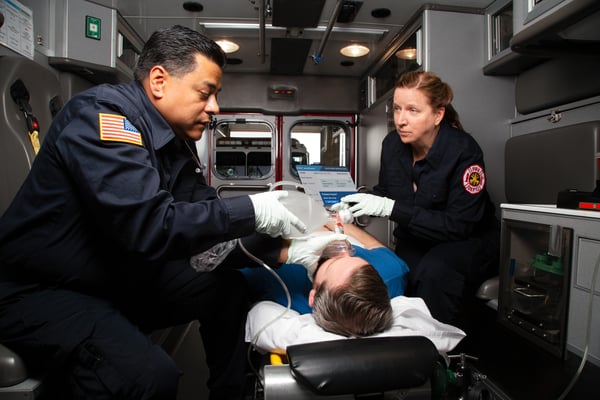News Alert: New ePCR Integration Simplifies EMS Data Management and Enables Better Care Coordination
Debriefing for the Modern Age: The Importance of Code Data from the Hospital Side
The concept of debriefing started in the military, with individuals providing first-hand accounts that were then analyzed and used to strategize for future missions
Was this information valuable?

The concept of debriefing started in the military, with individuals providing first-hand accounts that were then analyzed and used to strategize for future missions. But debriefing isn’t just for the military — far from it. Many other fields, including some dealing with life-and-death scenarios, have embraced debriefing.
For example, the American Heart Association (AHA) considers debriefing to be an essential component of every cardiac arrest resuscitation effort. The AHA recommends doing quantitative, focused debriefings that look at things like chest compression rate and depth during CPR because survival is linked to CPR quality.
Read: Taking a Deeper Look at the Guidelines for CPR
Scrub Pants Won't Cut It
Codes are chaotic. This is why, unfortunately, many medical professionals don’t collect the data. Those who do often attempt to do so by jotting notes on scraps of paper or even scrub pants. What a mess. Imagine trying to make sense of scribbles for debriefing purposes. If you can’t interpret the code data, it’s very difficult to determine how to practice CPR more effectively.
Want to turn case files into actionable information? Click Here
Cardiac arrest victims are paying the price: In most areas of the United States, survival rates for in-hospital cardiac arrest hover around 15 percent.
Cardiac arrest victims are paying the price: In most areas of the United States, survival rates for in-hospital cardiac arrest hover around 15 percent. The good news? The data we need to improve CPR are out there. It’s just a matter of capturing them efficiently.
Putting Data at Your Fingertips
The latest technology allows detailed metrics to be recorded electronically during a code and then downloaded and printed out for debriefing. The right solution should accurately measure CPR and other key data points throughout a code, so you can analyze resuscitation outcomes and apply what you discover to do better next time. For example, if compression rate and depth are problems, you could offer a workshop to train providers on how fast and deep they should be going. In our evidence-based age, it’s crucial to document what we do in clinical practice and then make changes based on reliable data. With the proper technology and debriefing practices in place, we hold the power to dramatically improve cardiac arrest outcomes.
Related Posts
How STAT MedEvac Connected Device, Software, and Data Technology To Enhance QA and Elevate Care
Podcast: 4 Ways ePCR Software Can Relieve EMS’ Biggest Headaches
ZOLL Pulse Blog
Subscribe to our blog and receive quality content that makes your job as an EMS & fire, hospital, or AR professional easier.
ZOLL Pulse Blog
Subscribe to our blog and receive quality content that makes your job as an EMS, fire, hospital, or AR professional easier.





